Rose Robinson is one of 12 artists selected as a Gallery 263 2024–2025 Small Works Project artist. This project presents artwork in flat files at the gallery and on our website. Visit Robinson’s Small Works Project page →
Can you tell us a little about yourself?
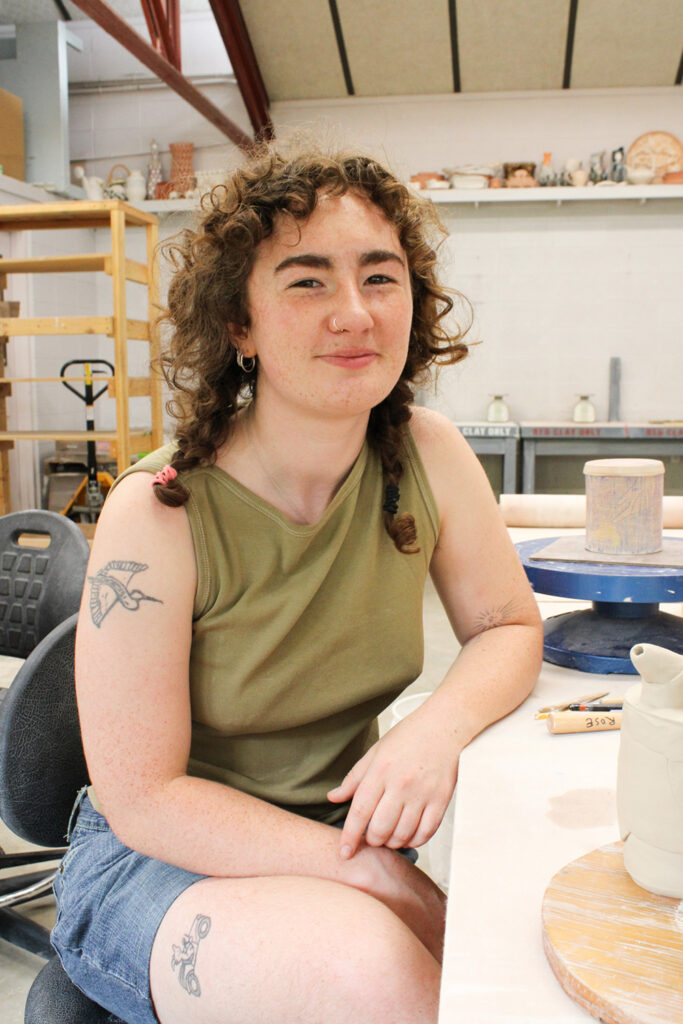
I grew up in Newburyport, Massachusetts and was raised by artist parents. My dad has painted and drawn cartoons for our local newspaper for some time. My mom is a printmaker. My parents feel like an important part of my story as an artist. They have influenced my work and I feel very lucky to have grown up in a home where art was really valued and where I was encouraged to make art from a young age. For the last few years, I’ve been studying art at Middlebury College in Vermont.
Besides making art, I love being outside: I enjoy hiking, farming, and gardening. Music is important to me. I’ve recently become interested in dance. I love telling stories. I love making people laugh. Eating good food with people I love might be my most favorite activity.
What kind of art do you make?
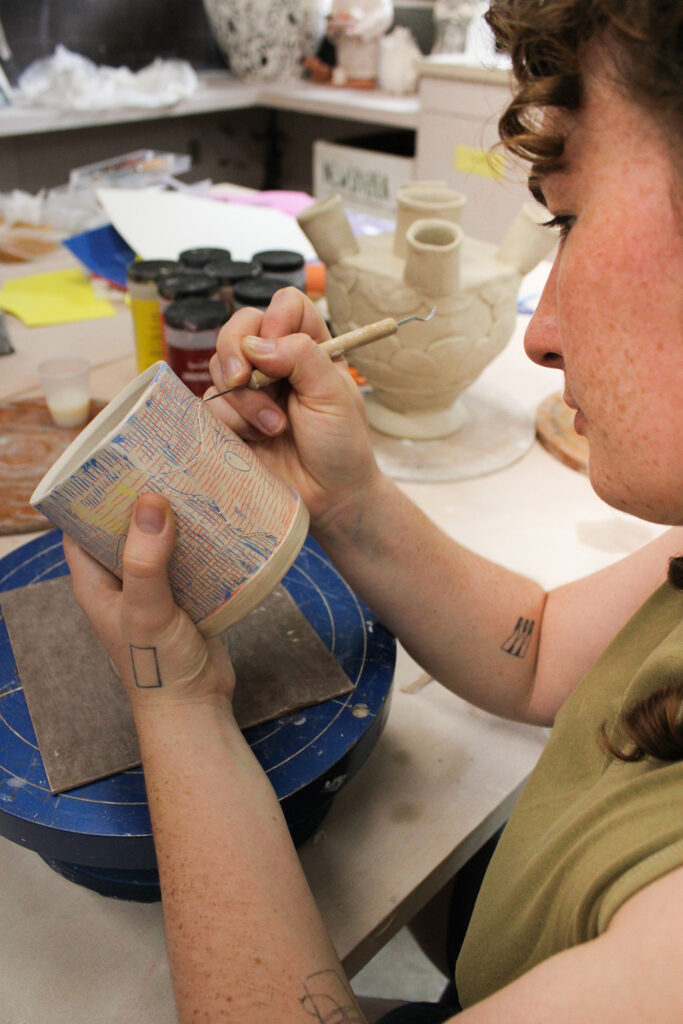
Although most of the work I have in the Small Works Project is 2D, the main medium I work in is ceramics. I make mostly functional pots, but I’ve been working on some sculptural pieces recently. All of my work contains some narrative quality, and surface design is an important part of my ceramic work. I’ve been working with clay for eight or so years, but I’ve been drawing and painting my whole life. With my mom being a printmaker, I’m able to make it into the print studio pretty often too. Looking towards 2025, I’m hoping to bring my 2D work to a more central place in my art practice this year.
What concepts does your art explore?
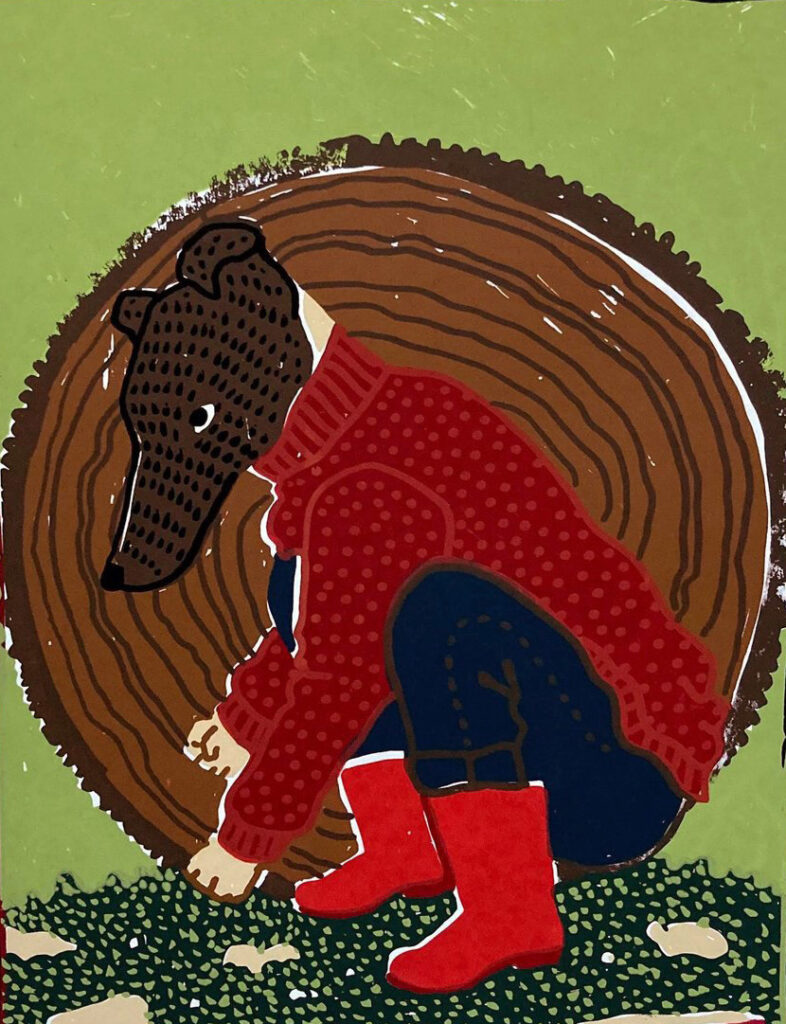
I describe my work as children’s literature for adults about how to be children again. I think we have a lot to learn from kids in how they move through the world. As humans, we forget that we’re also animals. We’ve domesticated ourselves, but at a young age, we’re a little closer to our wildness, closer to our bodies, closer to the rawness of our emotions, and more attuned to the fact that we are constantly figuring out how to be in the world. By seeking out play, rest, mischief, and curiosity in our relationships with each other and our environment, we become more in touch with the inner child and the undomesticated body. In this technology-driven, business and busy-ness oriented age, we lose touch with those parts of ourselves. I aim to make work that functions as daily lessons, daily reminders to return to those parts.
Can you tell us about the work you have on view in your flat file drawer at the gallery?
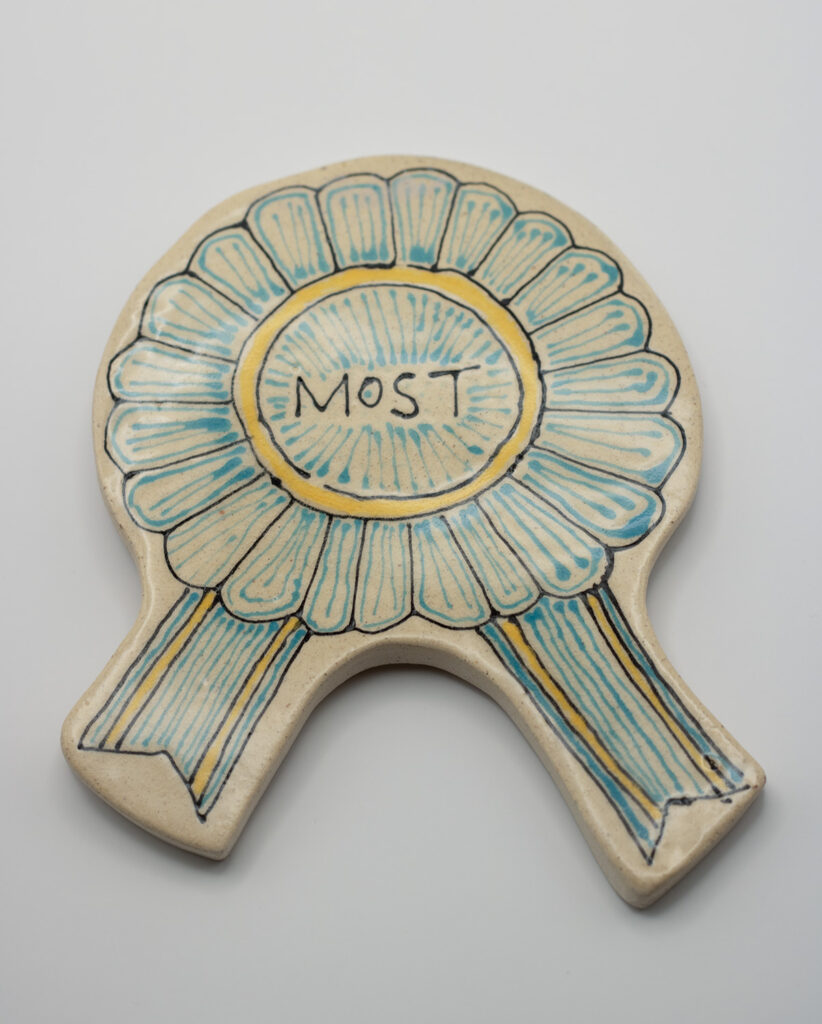
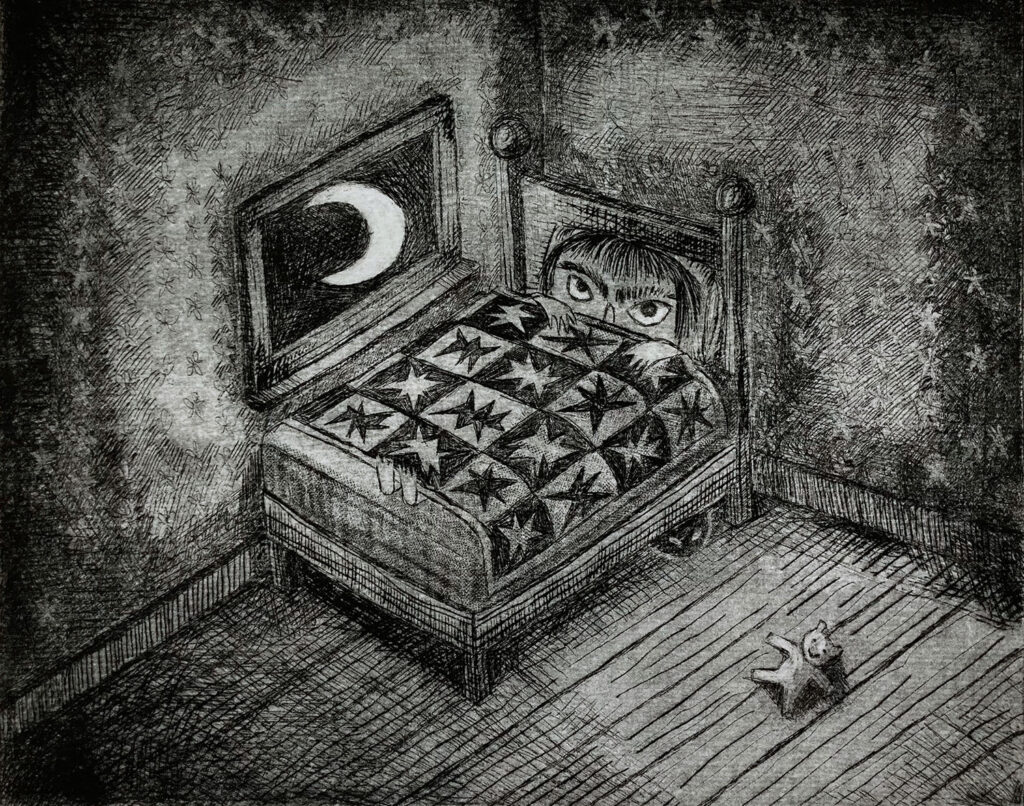
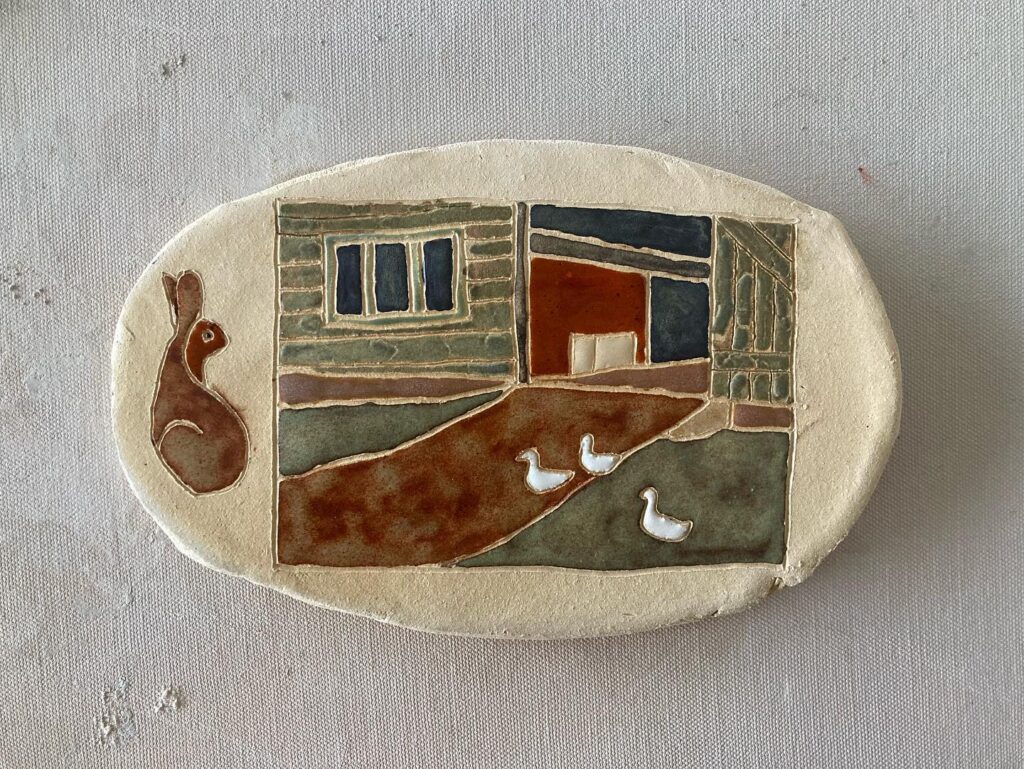
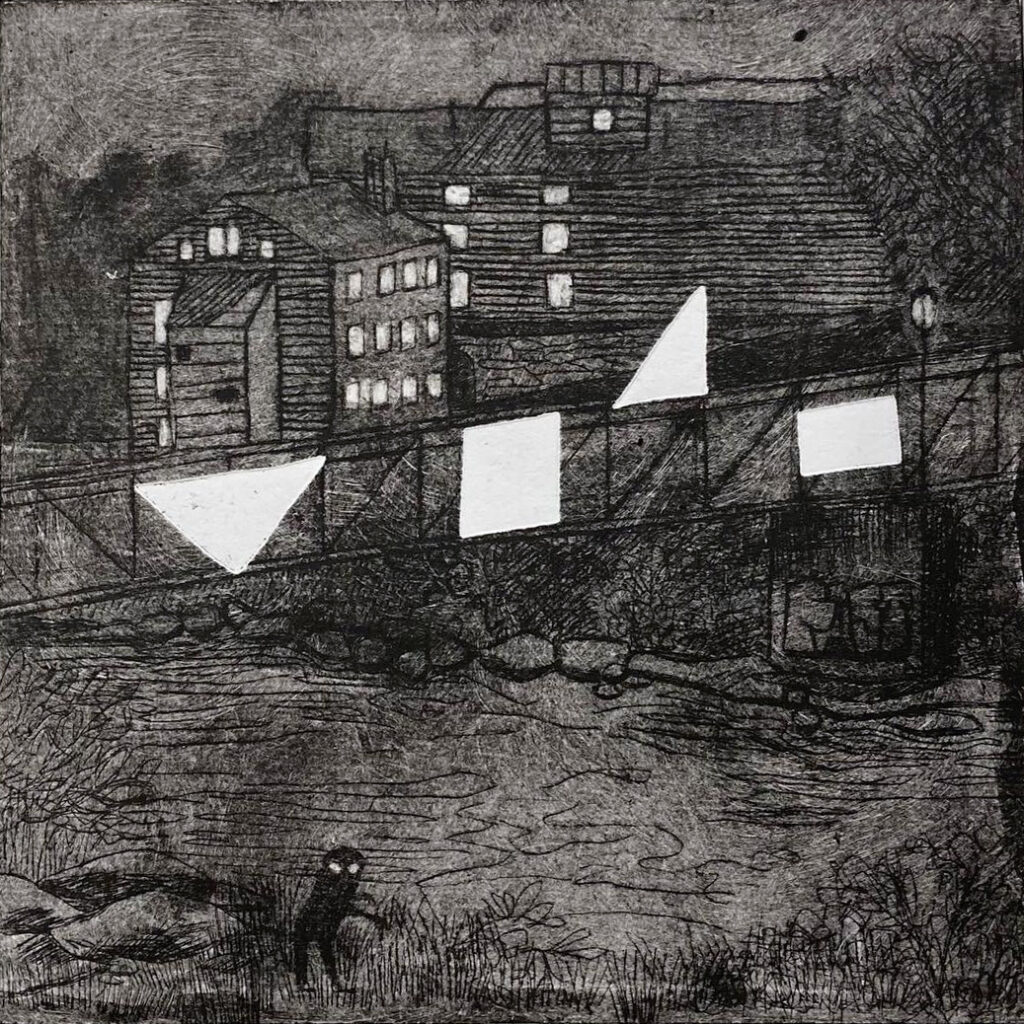
There is a pretty broad selection of my work over the last few years in my flat file! A lot of it is prints, a painting, and some ceramic pieces. As I’ve mentioned, I work across a lot of mediums, and that is really represented in this work. The people that I draw are sort of recurring characters, and I find it exciting to see how they show up differently in different work. I think they create a narrative throughline… maybe there is a story to be made by placing tiles next to each other, and maybe there is a different story created when you add a print to the mix. Maybe a totally new story results when you change their order.
Where do you make your work?
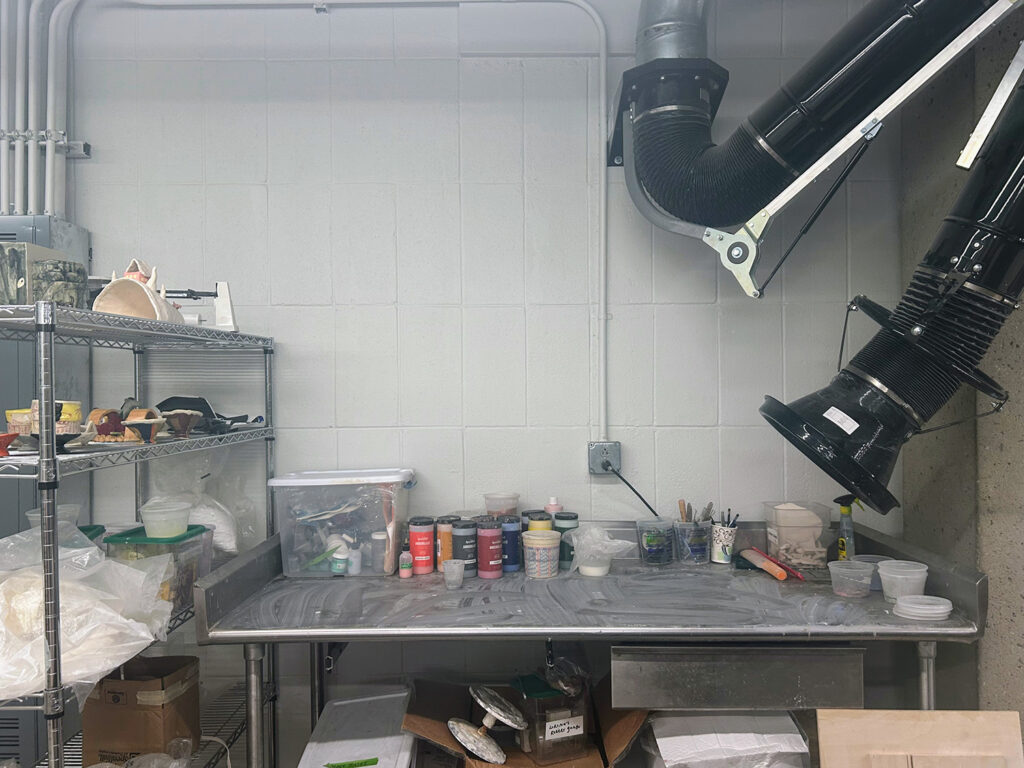
I make a lot of my work at school, in the studios at Middlebury. We have a student-run ceramics studio that I spend a lot of time in, and I’m constantly in the visual art building, in the various studio spaces there. Some of this work was made at home in my mom’s printmaking studio. Some of this work was made this summer while I was at Arrowmont, a craft school in Gatlinburg, Tennessee. I’m about to graduate, and so everything will shift soon. I don’t know what it will look like, which is scary, but also really exciting.
What are your favorite materials to use? Most unusual?
Well, clay is my favorite. It is tactile, earthy, versatile, challenging, and endlessly exciting in all of those qualities. Learning how to work with clay is like getting to know a person. You get attuned to reading how far you can stretch the material, how much water it needs, how it’s going to dry. It’s like reading someone’s body language. Right now, I’m experimenting with some local clay that I dug from the ground in Middlebury.
What historical and contemporary artists inspire you?
There are so many. Tove Jansson is pretty much my God. Matthew Metz, Mike Helke, Linda Christianson, and Ted Saupe are some of my favorite potters right now. Nicole Eisenman, Lawren Harris, Salman Toor, and Alice Neel are some favorite painters. Edward Gorey, Richard Scarry, and Ludwig Bemelmans are some illustrators I think about constantly. Folk art is big for me. The list goes on and on.
When did you decide you wanted to be an artist?
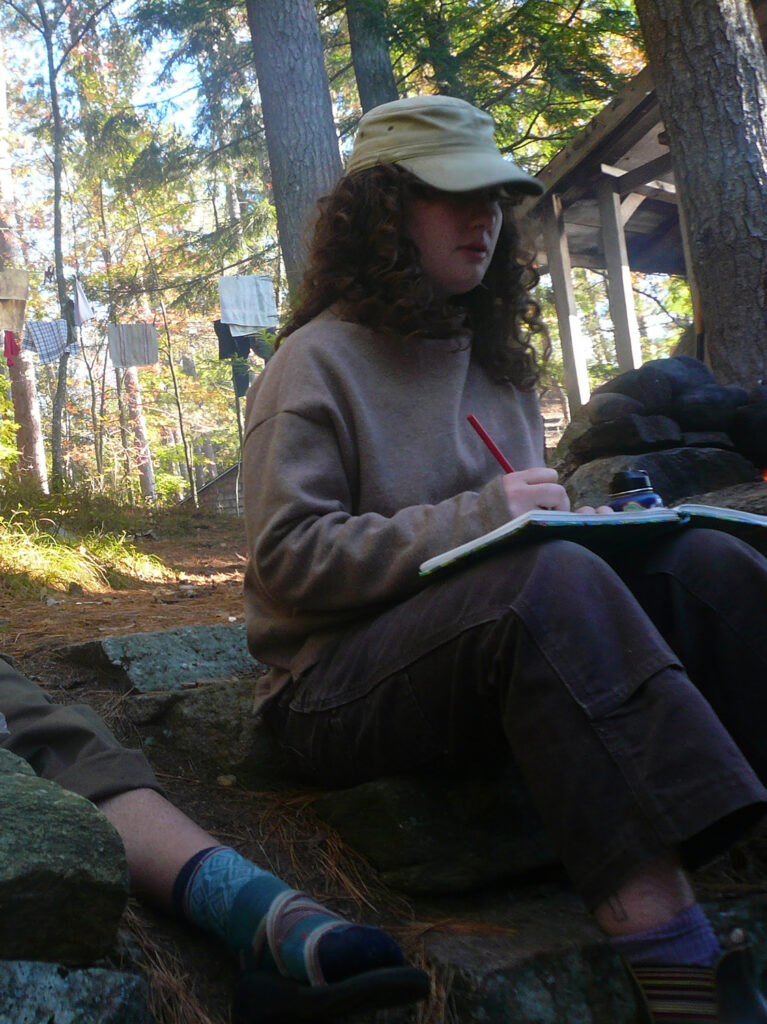
Growing up, I always wanted to be an artist. In high school, I was making a lot of art, but I was also really invested in climate justice and sustainable farming spaces, and actually went to college intending to be an environmental studies major. I wanted to be a farmer. Pretty early on at school though, I started questioning why I was getting my degree, and ended up majoring in art because I thought, if I’m going to do this, why not study what I love doing the most? That choice felt so good, and I realized art really is what I love most. It felt right to be pursuing it, and I became really serious about my art and wanting to be an artist.